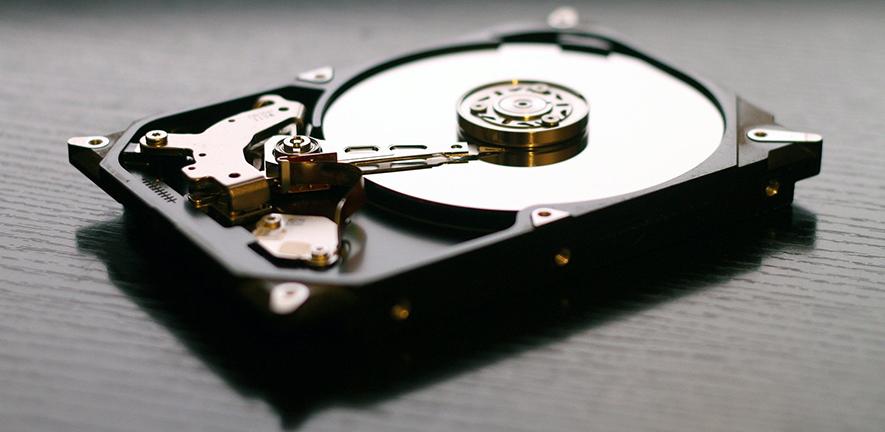Choosing your NAS | Storing Your Photos Part 2
Apr 11, 2025
By Wayne Kenward
If you haven’t already ready my blog “Image Storage Guide”, please read it first.
Blog: Image Storage Guide | COAP Online
This blog is a follow on to the “Image Storage Guide” and covers selecting a Synology NAS, connection, configuration and some ideals on how to work with a Synology NAS.
NAS Selection.
Which model should I select? is the most common question I get asked. There is no set in stone answer, it will depend on a lot of factors, with budget often being the deciding factor.
All Synology models are listed at Product List | Synology Inc. You can sort by Product Line, Form Factor, Drive Bays, Networking Speed(1Gbps or 10Gbps), IP Camera Support (for CCTV) and Features.
For most photographers, the Synology DS range will be the perfect choice, the cost is reasonable, they are designed to sit on a desk, and run cooler and quieter than the rack mount systems (trust me, my RS1221RP+ sounds like a Harrier). The DS range is broken down into 3 series:
- DS value Entry level
- DS Plus Mid-range, more performance than the Value models and more upgrade options
- DS XS/XS+ High performance, overkill for most.
If you only want to use your NAS for storing images and have no plans to run any of the Synology apps, and if only a few laptops, PCs or MACs are going to connect to the NAS at any one time, then the Value Range is ideal. However, if you think you may want to run some of the Synology apps, like the Plex Media Server, then the Plus series will be the better option. The Plus models have better CPUs, more options for increasing the RAM, and some, not all, have options for 10Gbps network cards and options to add ultra-fast SSD cache drives. They also support virtualisation (one for the IT geeks) and have more options for Hyper Backup.
Let’s compare the DS423 and DS423+, both are 4 bay NAS devices, both run the same Synology code, but there are some major differences between the two models.
A full comparison can be viewed here Synology Inc. below I’ve highlighted in green the main differences.

Based on Amazon UK prices on 20th March 2025, the DS423 is £355 and the DS423+ is £482. Only you can decide if the extra £127 is worth the extras the Plus gives you.
Why did I use the 4 bay as the example? simple, I think the 4 bay should be the smallest NAS you consider. Why you may ask, when you could get a cheaper 2 bay NAS and just add 2 large drives to it. True, but with 4 or more bays there is one major advantage. You can be protected from 2 drives failing using SHR-2. There are other advantages, for example, the more drives you have, the faster you can read and write data. In real terms, this won’t make much difference to most of us.
What would I recommend? These would be my go-to models:
- DS423+ 4 bays and options to upgrade, no 10Gbps network support.
- DS923+ 4 bays, loads more power for apps and options for 10Gbps networks
- DS1522+ 5 bays and the same power as the DS923+ for not a lot more money
- DS423 If you are on a budget and only want to store data.
Decide how much storage you require.

The million-dollar question, how do you work this out? Look at the file sizes of you most recent images. The Canon R5 for example, takes images at 45mp, meaning each RAW file is about 40-50Mb in size. Run a 45mp image through Topaz and you could end up with a 150-250Mb TIFF export file. Lightroom and Photoshop will save files as a 60-80Mb DNG once you do any Gen Ai processing, and with cameras shooting at 20, 30 and 40fps we can soon end up with a lot of space being used. You also need consider your exports to JPG, to a lesser extent, but it all adds up.
Here's an example that I hope will show how much data a shoot would need storage wise. This 2 day shoot was air to air in Sweden with two EOS R5 cameras over 5 flights.
Day 1 12,336 images 583GB (RAW + TIIF and DNG exports)
Day 2 5,202 images 246GB (RAW + TIIF and DNG exports)
Processed 211 images 2.73GB (Processes images export as JPG)
Total Storage 831.73GB
Image how much space you would need for 6 days at RIAT, a year of shooting, 10 years of shooting and then all the images you already have. Plus consider, do you want to store other data on your NAS, like music and your files, videos will really eat into your storage, especially 4k or higher.
My data current data is made up of:
- Personal Files 235GB
- Media 73TB
- Photos 54TB
I’m using just over 8.5TB of data, at a minimum, for this amount of data, I would recommend considering a NAS with at least 16TB of storage, so I can double my data. With Synology, if you do run out of free storage space, it’s not the end of the world, you just need to swap the smaller drives with larger drives one at a time and using Synology Hybrid RAID, the NAS will automatically add the extra space. But then you are stuck with the old hard drivers, which will have very little value second hard, so it is always more cost effective to add larger drives when you first setup the NAS.
I covered the RAID levels and how to work out the storage you get on the previous blog
Blog: Image Storage Guide | COAP Online if you want a technical in-depth explanation. This is really all you need to know with a Synology NAS.
Use the Synology RAID Calculator
RAID Calculator | Synology Inc.
Use Synology Hybrid RAID (SHR)
- SHR Synology’s RAID with protection from 1 drive failing
- SHR-2 Synology’s RAID with protection from 2 drives failing
Using 10TB drives, the green below is the free storage space you will have using SHR or SHR-2.




Decide on your Hard Drives

It is key that you select a hard drive model that is compatible with your NAS. My preference is Western Digital (WD), I’ve heard good things about Seagate IronWolf, and Synology have their own hard drives. Synology do offer models already fitted with Synology drives as part of a discounted bundles. Shop around and see what is on offer and then check the Compatibility List | Synology Inc. It’s easy to use, select your NAS model, Internal Tray and click Find Drives

Then select Synology or 3rd Party

You can then filter by Brand, Class (NAS or Surveillance, you always want NAS unless you plan to use your NAS for CCTV) and capacity.

You now have all of the information you need to select and purchase a NAS, once you've ordered it and are ready to set it up then you can move onto the next blog "Setting up your NAS".
Continue to Blog: Setting up your NAS | COAP Online to set up your new NAS.
Did you know our blogs are written exclusively by our members? We'd love for you to come and experience what COAP Online is all about!
Not yet a member?
Enjoy a free 30-day trial!
COAP Online membership brings 100s of aviation photographers from around the world together in a friendly, helpful and inspirational community. You'll enjoy monthly challenges, competitions, livestreams, blogs, exclusive discounts, meet-ups and more!




